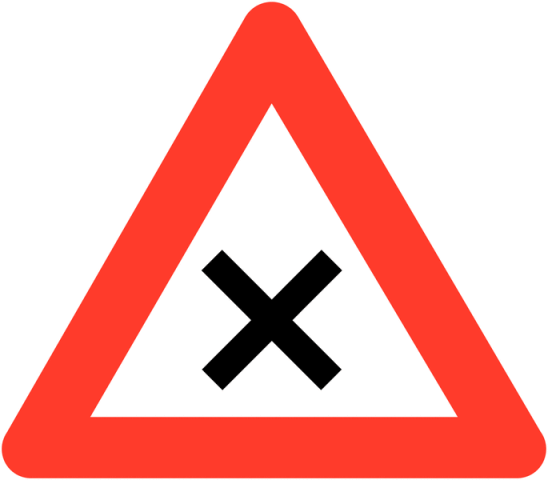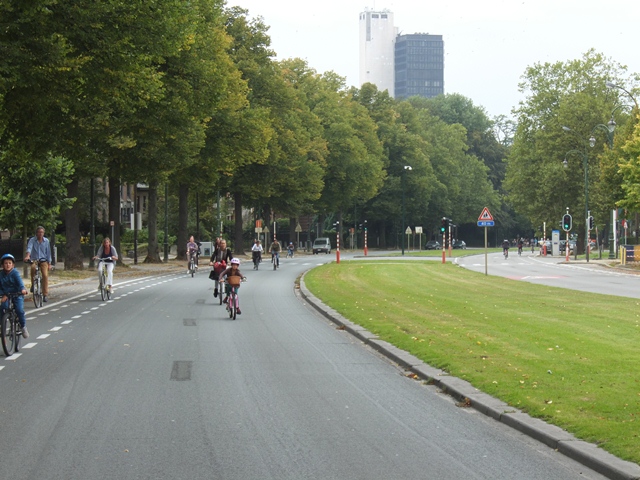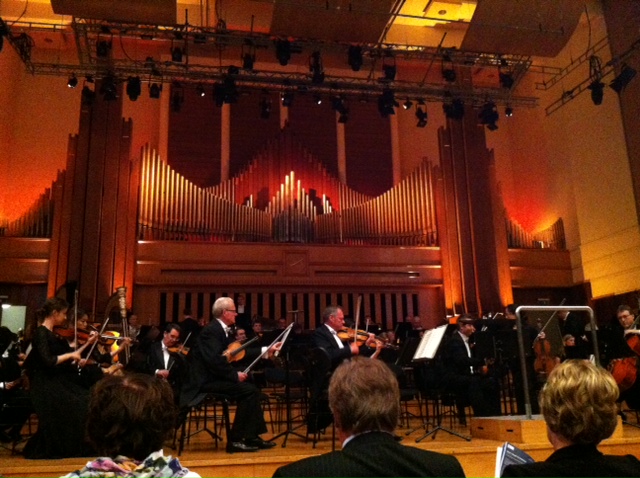
LFB 23: That’s a bit different? (No.23)
October 13, 2015
In general, after living in the same place for years, it’s strange that things that used to make one think “wow, that’s quite odd” become very normal. However, I also think it’s important to not to forget the fresh new feeling you get in the beginning. This time, I would like to talk about things between Belgium and Japan that are just a little bit different.
Priority to the right
 First of all, Belgian cars have priority to the right. This still feels often odd to me. As well as in other countries on the European continent, one drives on the right-hand side in Belgium, but what is a little different in Belgium from other countries is that, in principle, when two cars enter an intersection the car on the right has priority. It doesn’t matter if the car goes straight, turns left or right, it’s all the same. The only exception to this rule is when it’s explicitly stated otherwise. If there are white triangular road markings upon entering an intersection, it means that other cars on the intersection have priority.
It’s quite difficult to get used to this. When you enter an intersection straight ahead and you do not always pay attention to the cars coming from the right, they will plunge in without slowing down. During the morning rush, cars from the right side join the main road, which results in congestions. Then again, something very Belgian-like, people make compromises and let each other proceed. First of all, Belgian cars have priority to the right. This still feels often odd to me. As well as in other countries on the European continent, one drives on the right-hand side in Belgium, but what is a little different in Belgium from other countries is that, in principle, when two cars enter an intersection the car on the right has priority. It doesn’t matter if the car goes straight, turns left or right, it’s all the same. The only exception to this rule is when it’s explicitly stated otherwise. If there are white triangular road markings upon entering an intersection, it means that other cars on the intersection have priority.
It’s quite difficult to get used to this. When you enter an intersection straight ahead and you do not always pay attention to the cars coming from the right, they will plunge in without slowing down. During the morning rush, cars from the right side join the main road, which results in congestions. Then again, something very Belgian-like, people make compromises and let each other proceed.
My impression of Belgians is that they are very kind, tolerant towards differences and prefer compromise over confrontation. This is an opinion shared with many fellow diplomats residing here in Belgium. At the same time, the second the Belgians have their hands on a steering wheel, they change completely and become “aggressive”. During congestions, people persistently jam themselves on intersections when they would better wait instead. As a result, the opposite traffic lane is obstructed, so even when the stoplights turn green the cars can’t move. Of course, the drivers in the opposite lane get frustrated by this so they do the same and in the end, everyone’s time is wasted. It’s something I’ve often witnessed.
Crosswalk
 On the other hand, when it comes to pedestrians, I strongly feel that the Belgian people are very tolerant. At places where a pedestrian is waiting to cross, even when there are no traffic lights, the car will immediately stop. Then when the pedestrian crosses the street, they’ll often wave at the car or give them thumbs up as a gesture of gratitude; no matter if they’re young or old. On the other hand, when it comes to pedestrians, I strongly feel that the Belgian people are very tolerant. At places where a pedestrian is waiting to cross, even when there are no traffic lights, the car will immediately stop. Then when the pedestrian crosses the street, they’ll often wave at the car or give them thumbs up as a gesture of gratitude; no matter if they’re young or old.
To be honest, I became strongly aware of this when I returned temporarily to Japan. I seemed to recall from memory that in Japan cars would also stop at places without a traffic light to let pedestrians cross. However, it was not like that at all. Maybe the intersections I crossed were special, but none of the cars driving by slowed down in speed and just drove past the pedestrian crossing. Eventually, I had to wait until no cars came to be able to cross. While I felt somewhat sad, it made me re-acknowledge the goodness of Belgium.
No Car Day
 Speaking of pedestrians, once a year there’s a “No Car Day” in Brussels on the third Sunday of September. In short, if not for vital work-related exceptions, cars are not allowed in the city center of Brussels on that day, from 9 in the morning to 7 in the evening. For a city the size of Brussels, this is quite bothersome. As the preparations to block the entrance of the highways that lead to Brussels start on the day before and the tunnels from the ring-road in the center as well are closed to traffic the night before. Speaking of pedestrians, once a year there’s a “No Car Day” in Brussels on the third Sunday of September. In short, if not for vital work-related exceptions, cars are not allowed in the city center of Brussels on that day, from 9 in the morning to 7 in the evening. For a city the size of Brussels, this is quite bothersome. As the preparations to block the entrance of the highways that lead to Brussels start on the day before and the tunnels from the ring-road in the center as well are closed to traffic the night before.
This year, I had to see off a visitor early in the morning on the day at the airport, located outside the car-free area and then, we had a very hard time re-entering the city. The rule is supposedly that you’re allowed to drive a car with a diplomatic number plate for work-related purposes; however, not all police officers at the check point to enter the city seemed to be aware of that fact. While I was explaining the situation to the police officers in question, I saw families riding on bikes and youngsters on skateboards unhindered go by and I felt relaxed. There’s a ‘pedestrian zone’ in Tokyo as well but I think it’s probably impossible to make the entire city center car-free.
15 Minute Rule
 Lastly, there’s one more thing I’d like to talk about: the “15 minute rule”. This so-called 15 minute rule isn’t a set expression; rather it’s a term I’ve personally created. Basically, it’s safe to say that almost everything in Belgium is bound to commence late. Though at the same time, you can assume that most of the times, it will start about 15 minutes later. This isn’t just the case with events that are difficult to manage but surprisingly also with concerts at large theatres such as at the Bozar or even ballet performances. This is difficult to imagine in Japan. I admit it was a bit puzzling at first but once you know it’ll start 15 minutes later, it doesn’t bother you as much. Lastly, there’s one more thing I’d like to talk about: the “15 minute rule”. This so-called 15 minute rule isn’t a set expression; rather it’s a term I’ve personally created. Basically, it’s safe to say that almost everything in Belgium is bound to commence late. Though at the same time, you can assume that most of the times, it will start about 15 minutes later. This isn’t just the case with events that are difficult to manage but surprisingly also with concerts at large theatres such as at the Bozar or even ballet performances. This is difficult to imagine in Japan. I admit it was a bit puzzling at first but once you know it’ll start 15 minutes later, it doesn’t bother you as much.
On the other hand, when you’re invited for dinner at somebody’s house, it’s almost a rule not to arrive at the host’s house earlier than the time scheduled but to arrive around 10 minutes later. This is because people assume the host is still incredibly busy making last-minute preparations so it is more mindful to arrive a bit later. When we’re expecting visitors at the residence, I’m honestly very grateful sometimes when they arrive later as well. Even in situations like these, Belgians arrive around 15 minutes later so that helps a lot. The funny thing is, when they’re later than 15 minutes, they will apologize a lot. I think it’s because that’s what the “biological clock” of Belgian people is like.
|
